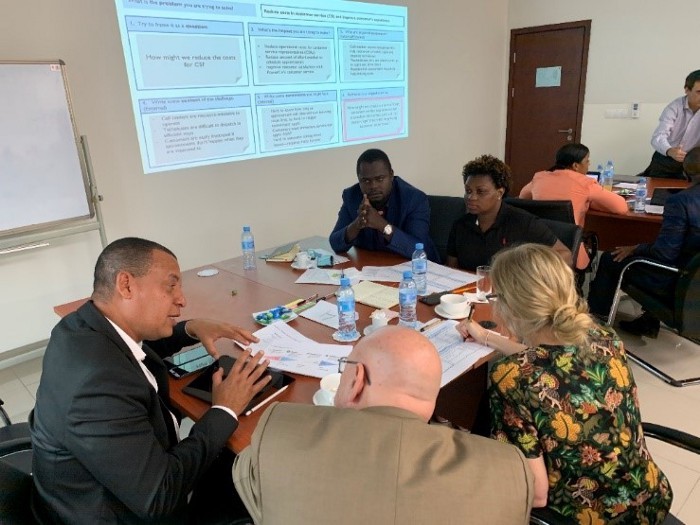- Where We Work
- Africa
- African Union
- Power Africa
- Trade and Investment
- Angola
- Benin
- Botswana
- Burkina Faso
- Burundi
- Cameroon
- Central Africa Regional
- Central African Republic
- Chad
- Côte d'Ivoire
- Democratic Republic of the Congo
- Djibouti
- East Africa Regional
- Eswatini
- Ethiopia
- Ghana
- Guinea
- Kenya
- Lesotho
- Liberia
- Madagascar
- Malawi
- Mali
- Mauritania
- Mozambique
- Namibia
- Niger
- Nigeria
- Republic of the Congo
- Rwanda
- Sahel Regional
- Senegal
- Sierra Leone
- Somalia
- South Africa
- South Sudan
- Southern Africa Regional
- Sudan
- Tanzania
- The Gambia
- Uganda
- West Africa Regional
- Zambia
- Zimbabwe
- Asia
- Europe and Eurasia
- Latin America and the Caribbean
- Middle East
- Mission Directory
Speeches Shim
Mozambique
POWER AFRICA FACT SHEET
MOZAMBIQUE ENERGY SECTOR OVERVIEW
At 187 gigawatts, Mozambique has the largest power generation potential in Southern Africa from untapped coal, hydro, gas, wind and solar resources. Hydropower currently accounts about 81% of installed capacity. However, natural gas and renewable energy sources occupy a growing share of Mozambique’s energy mix. Despite the outsized potential, only 29% of the population has access to electricity, due to limited transmission and distribution networks and unfavorable market conditions for new generation. The industrial and commercial segments are expected to drive demand growth, as residential consumers struggle with the existing highly subsidized tariffs.
GENERATION CAPACITY
-
Installed Capacity: 2,827 MW
-
Hydroelectric: 2,184 MW
- Thermal: 643 MW
-
- Power Africa New MW to Date Reached Financial Close: 280 MW
- Power Africa 2030 pipeline: 1,947 MW
CONNECTIONS
-
Current Access Rate: 29%
-
Rural: 15% Urban: 57%
-
- Households without Power: 4.1 million
- Target: Universal Access by 2030
- Power Africa New Off-Grid Connections: 911
INVESTMENT AND ENABLING ENVIRONMENT
Biggest Issues
-
Public Finances/Macro-economic issues
-
Lack of credit-worthy utility and cost-reflective tariff
- Lack of strong, transparent regulator
Power Africa Interventions
-
Utility Support gender integration, community engagement and project development
-
Support to new national regulator
-
Revision of the electricity law
-
Transaction-specific support
POWER AFRICA’S ENGAGEMENT IN MOZAMBIQUE
MW GENERATION
Through a series of U.S. Trade and Development Agency (USTDA) grants Power Africa is supporting feasibility studies in Mozambique. One grant is for a 100 MW solar photovoltaic (PV) plant at the Nacala International Airport. The grantee is WHN Solar, S.A. and the solar plant, to be developed in increments of 20-40 MW, includes an associated energy storage facility. The project will add generation capacity and help stabilize the grid, in Northern Mozambique. USTDA also awarded $1.1 million grant to eleQtra (Moçambique) Limitada for a 120 MW wind farm feasibility study in southern Mozambique’s Namaacha District. EleQtra’s management acknowledged how critical this early-stage support is strengthening Mozambique’s power supply. Finally, USTDA is supporting a technical, financial and economic study for a 78 MW gas-fired power plant through a grant to Kukila Investments that includes associated transmission lines and a gas pipeline spur, in the Chokwé District of Gaza Province.
CONNECTIONS
Power Africa’s Southern Africa Energy Program (SAEP) is supporting the national utility, Electricidade de Mocambique (EDM) to develop the 560 km 400 kilovolt (kV) Temane Transmission Project (TTP) by funding the Project Manager position responsible for coordinating TTP work streams and liaising with EDM, the owner’s engineers, as well as various consultants and advisors. The TTP will link the planned 400 MW gas-to-power plant in Temane to Maputo and South Africa. USTDA is supporting the detailed design and technical inputs for an engineering, procurement and construction (EPC) tender for the planned Mozambique-Zambia 400 kV transmission interconnector. The beneficiaries of the interconnector project include the Southern African Power Pool and the state-owned utilities of Mozambique and Zambia.
SUCCESS STORY
In 2016, Power Africa provided technical assistance to EDM to improve its Getting Electricity score on the World Bank’s annual Doing Business Index, and devised new connections procedures that were formalized in a decree in by mid-year. The new procedures, implemented in 2017, consolidated the number of institutions involved in the application process and allowed companies to get reimbursed for the cost of the transformers purchased on EDM’s behalf. As a result, the time to get electricity fell from 91 days to 54, procedures from 7 to 5, and cost from 2,276% of per capita income to 800% for new commercial connections.
Improving Electricity Utility Customer Management in Mozambique through Human-Centered Design
In the energy context, human-centered design means thinking about customer energy needs; how customers will perceive, interact with, and use energy products; and iterating solutions to promote alignment between technical and financial feasibility and customer behavior and perception.
With a current electrification rate of only 29 percent, the Government of Mozambique aims to electrify all households by 2030. For companies like Electricidade de Moçambique (EDM), Mozambique’s electricity company since 1977, achieving this daunting task relies heavily on human behavior; from customers being willing to pay for connection contracts and electricity to how EDM staff communicates with new customers and communities.
READ MORE about how EDM is improving their customer management on our blog (English / Portuguese)


Comment
Make a general inquiry or suggest an improvement.